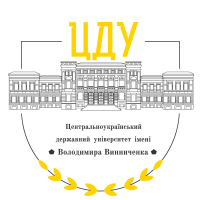VULNERABLE CHILDREN IN THE USSR PRIOR TO AND DURING THE YEARS OF THE HOLODOMOR-GENOCIDE
DOI:
https://doi.org/10.32782/cusu-hist-2024-1-11Keywords:
Holodomor, genocide, children, victims, find, abandonedAbstract
The article analyzes the fate of children whose parents dropped them off at children's shelters during the Holodomor-genocide years. The causes and scope of this antisocial phenomenon are determined. Examples of the life path of individual witnesses show the post-traumatic experience of children who have become victims of being dumped. The author used an interdisciplinary methodology in her work, applying microhistorical and psychological tools, as well as general scientific methods of analysis, synthesis and principles of the historical approach. The purpose of this article is to analyze the causes and rapid spread of such an antisocial phenomenon as runaway children, find out the sources of replenishment of this category, reflect on the fate of runaways on the eve and during the Holodomor-genocide. The tasks of our article are to determine the causes of child abandonment, the scale of this antisocial phenomenon, to analyze the fate of abandoned children and to explain the post-traumatic syndrome for children who were abandoned during the Holodomor. During the research, the author came to the conclusion that hundreds of thousands of Ukrainian children, whose parents tried to save them by taking them to children's shelters and leaving them there, became victims of the Holodomor. Naidas, who managed to survive almost all their lives, hoped that their parents would take them into the family, they would feel family warmth and motherly love again. Most of these hopes remained Fata morgana. Children were brought up in state boarding schools with their poverty, indifference and ideological raggedness. The Holodomor forever transformed the Ukrainian identity, instilled fear in the minds of people who survived it, inflicted irreparable psychological trauma on children, in front of whom relatives died, babies whom their parents, trying to save, threw them into orphanages, but also children's shelters during the Holodomor years became conveyors child death, forever taking away the lives of the most innocent victims of the Holodomorgenocide – children.
References
Букрєєв Т., 2015. Боротьба з дитячою безпритульністю та бездоглядністю у першій половині 20-х років ХХ ст. на півдні України (за матеріалами Херсонщини). Наукові праці історичного факультету Запорізького національного університету. Запоріжжя. Вип. 42. 67–72.
Букрєєв Т., 2019. Досвід подолання дитячої безпритульності та бездоглядності на Півдні України в умовах формування радянського тоталітарного режиму: дис. … канд. іст. наук: 07.00.01. – історія України / Східноєвропейський національний університет ім. Лесі Українки, Луцьк.
Діптан І., 1992. Проблема дитячої безпритульності на Україні (1919 –1932 рр.). В: Проблеми історії України: факти, судження, пошуки. Республіканський міжвідомчий збірник наукових праць. Вип. 2. Київ: Наукова думка. 52–60.
Діптан І., 2002. Голодомори 1921–1923 та 1932–1933 років: проблема дитячої безпритульності в Українській СРСР. Історична пам’ять. № 1 – 2. 16–29.
Зінченко А., 2002. Дитяча безпритульність у Радянській Україні у 20-х – першій половині 30-х рр.
ХХ ст.: дис. … канд. іст. наук: 07.00.01. – історія України / Одеський національний університет ім. І. Мечникова. Одеса.
Паращевіна О., 2005. Роль системи народної освіти у подоланні дитячої безпритульності в 20-х – першій половині 30-х рр. ХХ століття в Україні: автореф. дис. … канд. іст. наук: 07.00.01. – історія України / Дніпропетровський національний університет. Дніпропетровськ.
Ткаченко Б., 1993. Під чорним тавром: документи, факти, спогади. Лебедин: ВВ «Білий лебідь», редакції журналу «ЖЛ».
Шугальова І., 2020. Радянські фабрики янголів: система патронатів напередодні та у роки Голодомору 1932–1933. Вісник Київського національного університету. Вип. 3 (146). 75–83.
Шугальова І., Молдавський Р., 2019. Заклади державного піклування над дітьми напередодні та в роки Голодомору 1932–1933. Запоріжжя: Інтер-М.








